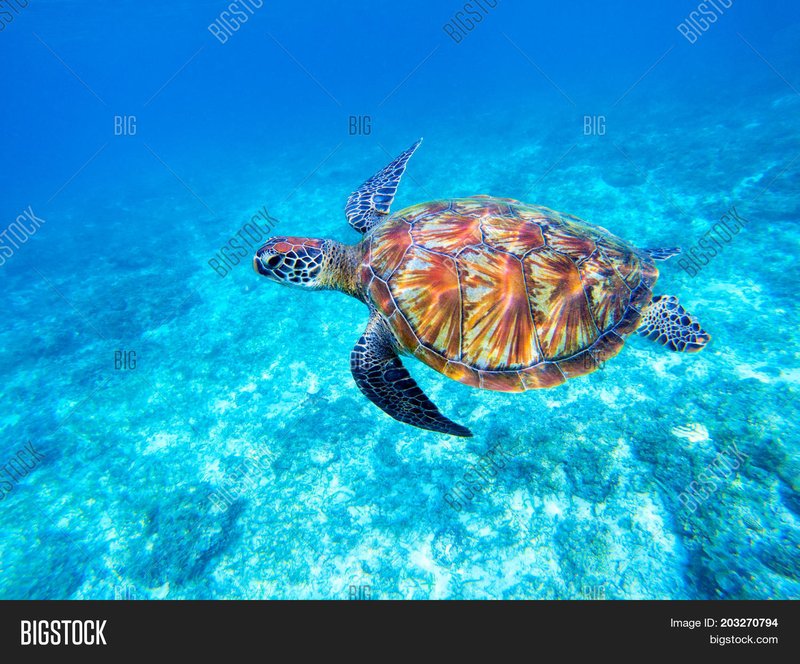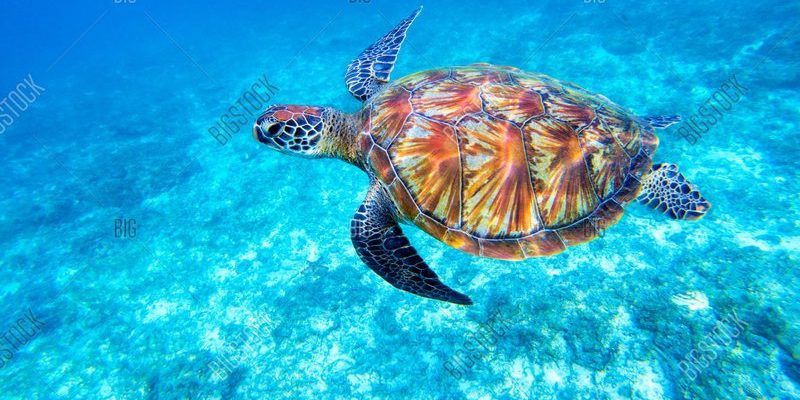
Have you ever seen a turtle glide gracefully through the ocean, its shell glimmering under the sun? That’s the Green Sea Turtle for you! These magnificent creatures are not only beautiful but also play a crucial role in maintaining the health of marine ecosystems. Imagine them as nature’s gardeners, helping to keep seagrass beds healthy and vibrant. But there’s much more to these turtles than meets the eye.
Green Sea Turtles are fascinating not just for their looks, but also for their behaviors and habitats. They are the largest hard-shelled turtles in the world, reaching impressive sizes, and they have a journey that can span thousands of miles. Sadly, they face numerous threats, from habitat loss to illegal hunting. But don’t worry—let’s dive deeper into the life of these gentle giants and discover what makes them truly remarkable.
What Are Green Sea Turtles?
The Green Sea Turtle, scientifically known as Chelonia mydas, is a species that belongs to the family Cheloniidae. These turtles are named for the green color of their body fat, which is unique compared to other turtle species. Unlike their name suggests, they can have a range of shell colors from olive brown to dark green, adapting beautifully to their environments.
Green Sea Turtles primarily inhabit tropical and subtropical waters around the world. They are often spotted in coral reefs, coastal lagoons, and grassy sea beds where they forage for food. The diet of a Green Sea Turtle mainly consists of seagrasses and algae, which not only helps them grow but also contributes to the health of their ecosystem.
Physical Characteristics
One of the most striking features of the Green Sea Turtle is its size. Adult turtles can weigh between 250 and 700 pounds and can grow to be about 3 to 4 feet long. Their shells, or carapaces, are large and heart-shaped, providing protection from predators in the ocean. Interestingly, their shells are not just hard; they are also flexible, allowing the turtle to move gracefully through the water.
Another unique characteristic is their flippers. These turtles have strong, paddle-like flippers that allow them to swim at speeds of up to 20 miles per hour in short bursts. Imagine moving through the water effortlessly—that’s how it feels for them! Their streamlined bodies help them cover large distances as they migrate to feeding and nesting grounds.
Habitat and Range
Green Sea Turtles are ocean wanderers, typically found in warm coastal waters. They have a wide distribution, inhabiting areas in the Atlantic, Pacific, and Indian Oceans. They prefer shallow waters near coral reefs, where they can find plenty of food and safe nesting spots. However, some populations migrate long distances to reach rich feeding areas and ideal beaches for nesting.
These turtles are known to return to the same nesting sites year after year, which could be likened to a family returning to a beloved vacation spot. The beaches they choose are often sandy and protected, allowing hatchlings to make their way safely to the ocean after they emerge from their eggs. Protecting these nesting beaches is critical for the survival of the species.
Diet and Feeding Habits
Green Sea Turtles are primarily herbivorous, meaning their diet consists mainly of plants. They particularly enjoy seagrasses and algae, with seagrasses being a staple of their diet. Think of them as the lawnmowers of the ocean, grazing on seagrass beds and helping to maintain the health of these underwater meadows. This not only benefits the turtles but also supports a variety of marine life that rely on healthy seagrass habitats.
Interestingly, baby Green Sea Turtles have a different diet when they first hatch. They eat small invertebrates like jellyfish and crustaceans, which provides them with the nutrients they need during their rapid growth phase. As they mature, they transition to the plant-based diet that characterizes adult turtles. This dietary shift is crucial for their overall health and development.
Reproduction and Nesting
When it comes time for Green Sea Turtles to lay their eggs, females embark on an incredible journey back to the beaches where they were born. Nesting typically occurs every two to four years, and a female can lay anywhere from 100 to 200 eggs in a single nesting season. After laying her eggs in a nest dug in the sand, she covers them and returns to the sea, leaving the hatchlings to emerge on their own.
Hatching occurs about 60 days later, and the tiny turtles must navigate the sandy beach to reach the ocean. This journey can be perilous, as they face numerous threats, including predators like birds and crabs. Once they make it to the water, they instinctively swim away from the shore, a behavior known as “the frenzy,” which helps them escape danger. It’s a remarkable and risky start to life!
Conservation Status
Unfortunately, the Green Sea Turtle is classified as an endangered species due to various threats. Habitat loss, pollution, climate change, and poaching all contribute to their decline. Coastal development has destroyed many nesting beaches, and ocean pollution affects both their feeding habitats and overall health. But it’s not all doom and gloom—there are many conservation efforts underway to protect these turtles and their habitats.
Organizations around the world are working to create safe nesting areas, reduce plastic pollution, and promote sustainable fishing practices. Awareness campaigns also help educate people about the importance of protecting Green Sea Turtles. Every small effort counts, and by supporting conservation organizations, we can all play a part in ensuring these amazing creatures continue to thrive.
Interesting Facts
| Scientific Name: | Chelonia mydas |
| Size: | 3 to 4 feet long |
| Weight: | 250 to 700 pounds |
| Diet: | Herbivorous (seagrasses and algae) |
| Speed: | Up to 20 mph (in short bursts) |
| Lifespan: | 50 to 80 years |
FAQ
How long do Green Sea Turtles live?
Green Sea Turtles have a remarkable lifespan, typically living between 50 and 80 years. Some individuals have been known to live even longer under optimal conditions. Their long life allows them to contribute to the ecosystem for many decades, but it also means they face numerous challenges over their lifetime.
Are Green Sea Turtles aggressive?
No, Green Sea Turtles are generally peaceful and not aggressive creatures. They prefer to avoid confrontation and would rather swim away than engage in aggressive behaviors. However, like any wild animal, they can feel threatened if cornered or provoked, so it’s important to observe them respectfully from a distance.
Do Green Sea Turtles have natural predators?
Yes, Green Sea Turtles do have natural predators, especially when they are young. Birds, crabs, and larger fish can pose a threat to hatchlings as they make their way to the ocean. Adult turtles have fewer natural predators due to their size, but sharks can still be a danger, particularly in certain ocean habitats.
What do Green Sea Turtles do during the day?
During the day, Green Sea Turtles spend a lot of time foraging for food in seagrass beds and coral reefs. They will graze on seaweed and algae, contributing to the health of their environment. Additionally, they often bask in the sun on sandy beaches to help regulate their body temperature. It’s a relaxed life, punctuated by feeding and swimming.
Can Green Sea Turtles breathe underwater?
Green Sea Turtles cannot breathe underwater. They are air-breathing reptiles and must come to the surface to take a breath. They can hold their breath for long periods, sometimes up to two hours while resting or sleeping underwater, but they will eventually need to surface for air.
How do Green Sea Turtles find their way home to nest?
Green Sea Turtles possess an incredible ability to navigate back to their nesting beaches, often returning to the exact spot where they were born. They do this using a combination of environmental cues, such as the Earth’s magnetic field, and possibly even smells. This remarkable homing ability is essential for their reproductive success.
What should I do if I see a stranded or injured Green Sea Turtle?
If you come across a stranded or injured Green Sea Turtle, it’s important to stay calm and act responsibly. Do not attempt to handle the turtle yourself. Instead, contact local wildlife rescue organizations or marine conservation groups. They have the expertise to assess the situation and provide the necessary care for the turtle.
Are Green Sea Turtles endangered? What is being done to protect them?
Yes, Green Sea Turtles are considered endangered due to various threats, including habitat loss, pollution, and illegal hunting. Conservation efforts are underway globally, focusing on protecting nesting sites, reducing bycatch in fishing, and raising awareness about their plight. Supporting these initiatives can help ensure a future for Green Sea Turtles.
What is the significance of Green Sea Turtles to ecosystems?
Green Sea Turtles play a vital role in maintaining the health of marine ecosystems. By grazing on seagrass, they help keep these habitats healthy, which benefits other marine life. Additionally, their nesting activities contribute nutrients to beach ecosystems, promoting biodiversity both on land and in the ocean. Protecting them helps sustain the overall health of marine environments.

